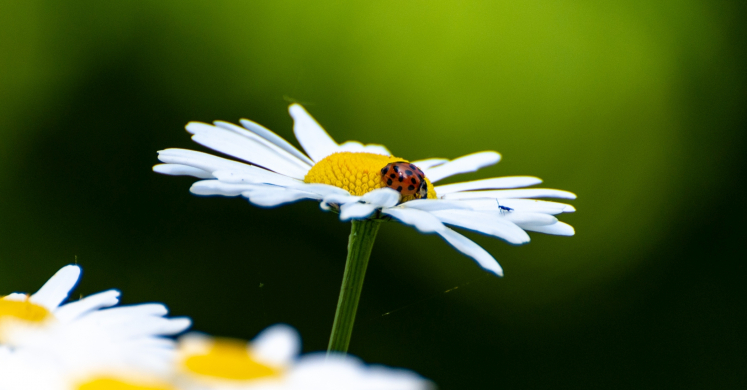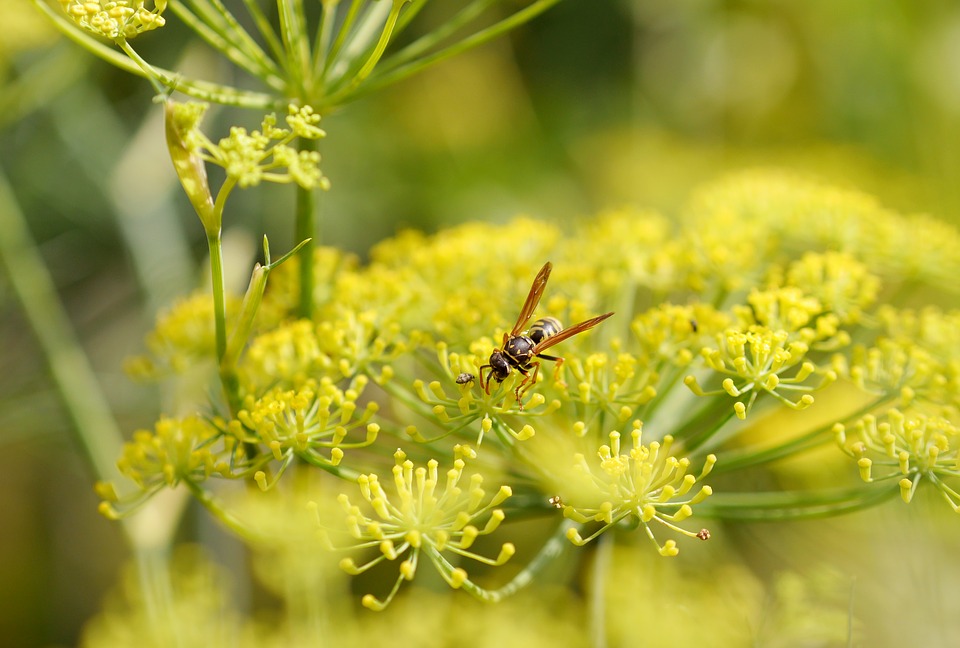Blog

Beneficial Insects: Natural Enemies
Beneficial Insects are those which contribute valuable services to our gardens, such as pollination and pest control. Pest control is performed by predators or parasitoids. Predators are insects that find and eat prey insects and mites; parasitoids lay their eggs on or in pests and their young feed on these insects.
Parasitoid wasps are the main member of the parasitoids. Braconid wasps are well known in the garden as they feed on tomato hornworm. Every good gardener knows that when they see a tomato hornworm, the large green caterpillars, covered in white cocoons they must leave them alone. The white cocoons are braconid wasp larvae which feed on the hornworms, helping to control their populations and minimize their damage to tomatoes. Learn more about braconid wasps here. Tachinid flies are also parasitoids. Their larvae feed on the larvae of moths, beetles, sawflies, stink bugs and other insects. Learn more about them here.
Predatory insects are much more diverse. Below is a list of some garden predators, what they eat in the garden, and links to more information.
- Predator wasps – caterpillars and other soft bodied insects
- Hover flies/syrphid fly larvae – aphids and other soft bodied insects
- Green lacewing larvae – aphids, whiteflies, leafhoppers, mealybugs, mites, thrips, caterpillars and insect eggs
- Ground beetles – slugs, caterpillars, cutworms, Colorado potato beetle
- Lady bugs (adults and larvae) – aphids, whiteflies, insect eggs, soft-bodied insects
For pictures of many of these garden friends take a look at this colorful poster from the University of California Statewide IPM Program:
How can we keep these natural enemies in the garden?
It is important to tolerate some pest damage. Pest insects must be present in the garden to keep the pest control insects around. In addition, planting a variety of flowers will keep predators and adult parasitoids happy as they also feed on nectar and pollen. Our gardens can become insect habitat when we provide overwintering sites in the way of fallen leaves and dead perennial stalks in the garden. Saving garden clean up to the spring will make all of our beneficial insect friends happy. Mulched garden beds and ground cover plants are both good sources of shelter for insects.
Below is a list of flowers that support natural enemies. Two plant families, Apiaceae and Asteracese, attract a large variety of predators and parasitoids, some of the most important plants from these families are included below as well as a few from other plant families.
KEY: p - perennials, a - annuals
Apiaceae (carrot family)
- Fennel (p)
- Dill (a)
- Cilantro (a)
- Caraway (a)
- Queen Anne’s lace (b)
- Ammi majus (false queen Anne’s lace) (a)
Asteraceae (aster family)
- Coneflower (p)
- Coreopsis (p)
- Cosmos (a)
- Golden rod (p)
- Sunflower (a)
- Tansy (p)
- Yarrow (p)
- Calendula (a)
Other plants
- Mints (p)
- Sweet alyssum (a)
- Cinquefoil (p)
- Milkweed (p)
- Buckwheat (a)
- Lupine (p)
- Lantana (a)
For more plant ideas and information on the types of insects that they support, see the Integrated Pest Management Program of University of Connecticut's "Plants That Attract Beneficial Arthropods" resource.



